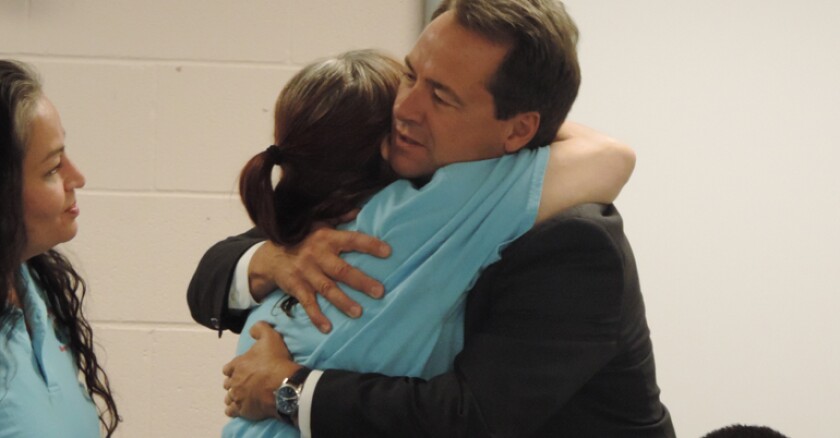"We’ve got to turn [prisons] from these very dark places that we try to push out of our thought process and have them foremost in our thought process," Malloy said at a conference last week.
He was talking about "Face to Face," a new initiative that encourages elected state officials to meet the people affected by their criminal justice policies. Malloy and seven other governors have so far opted to sit down for conversations with inmates, corrections officers and crime victims as part of Face to Face.
The initiative was launched this year by the Council of State Governments Justice Center and co-sponsored by the Association of State Correctional Administrators, the National Center for Victims of Crime, the National Reentry Resource Center and JustLeadershipUSA -- an organization that trains ex-offenders to become advocates for change.
"This is a bit of a departure for us," says Suzanne Brown-McBride, acting executive director of the Justice Center.
The Justice Center regularly releases data-heavy reports on juvenile justice, recidivism, substance abuse and mental health in states. It also offers trainings and tools for practitioners in the field. While that work is also informed by interviews with people involved in the criminal justice system, Brown-McBride says "this is the first time we've focused so singularly on those voices. We're hoping [governors] keep the voices and experiences of those impacted by the criminal justice system in mind."

Montana Gov. Steve Bullock walking with corrections staff.
Last week, Missouri GOP Gov. Eric Greitens worked alongside corrections officers at a prison. North Carolina Gov. Roy Cooper, a Democrat, visited a transitional house for ex-offenders. Nevada's Republican governor, Brian Sandoval, hosted a lunch with former inmates and their families. And Democratic Gov. Steve Bullock of Montana toured a women's recovery program in a correctional facility.
“Behind the statistics are real people, and by meeting face to face, we can gain a greater understanding of how to turn every potential opportunity into a success story," said Bullock.
The participation of both Republican and Democratic governors reflects the fact that criminal justice reform has become a rare bipartisan issue. And when it comes to criminal justice, the power for change lies with states and localities. Proof of that is in the numbers: More than 90 percent of people incarcerated in America are in state prisons and local jails.
Later in the year, the Face to Face campaign will engage with other elected state officials, but Brown-McBride says they "wanted to start with governors because they set such a tone and tempo for the work that happens in their states."
The Council of State Governments is a national association that counts governors, attorneys general, and state lawmakers among its members. So far, participants in the Face to Face initiative include the governors of Colorado, Connecticut, Georgia, Missouri, Montana, Nevada, North Carolina and Utah, as well as Ohio Attorney General Mike DeWine and Wisconsin Lt. Gov. Rebecca Kleefisch.
*This story has been updated to reflect the fact that Utah Gov. Gary Herbert had to reschedule his visit to a jail.









